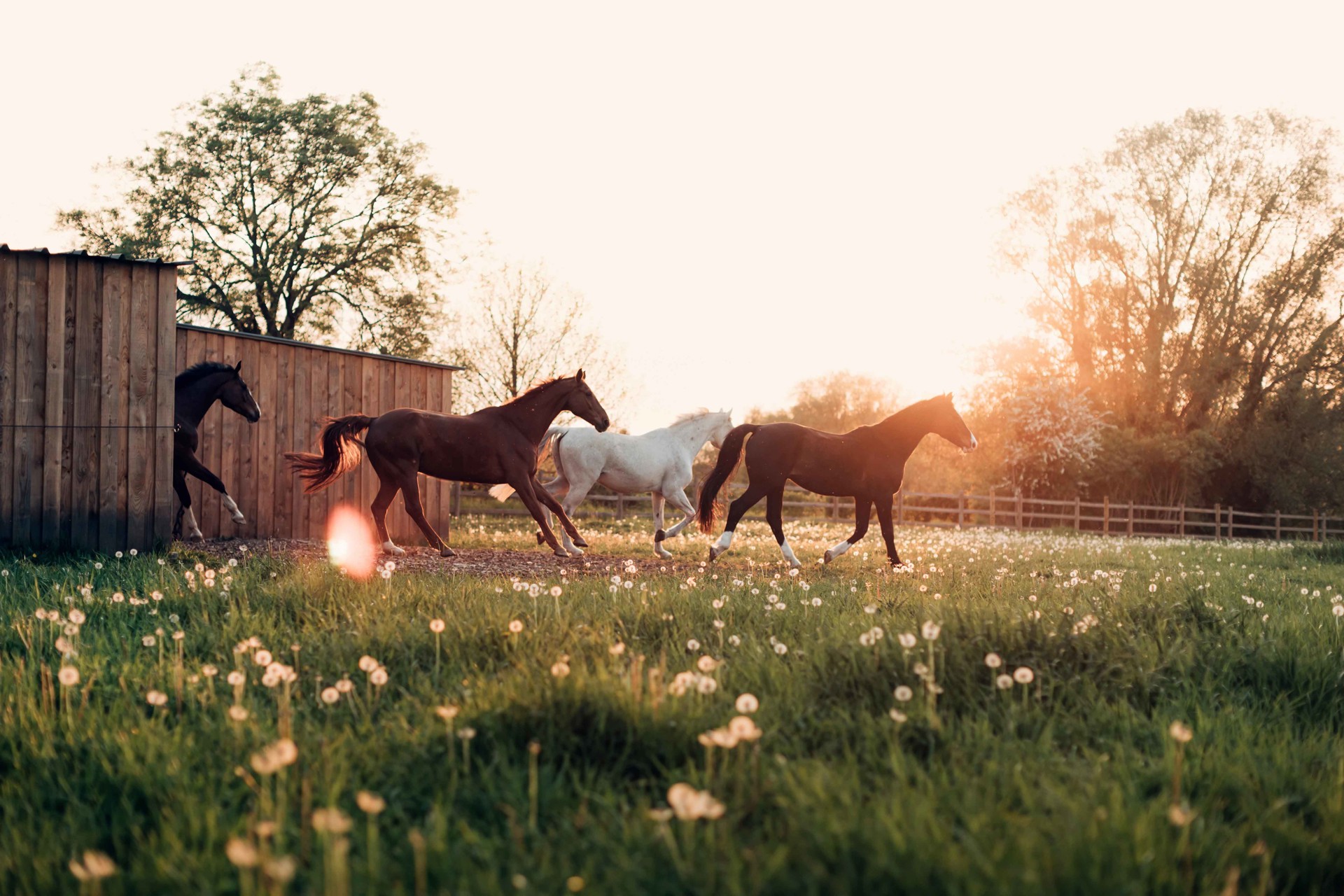LATEST NEWS
Spring turnout - gradual is key
01 Apr 2024
It has been sooooooo wet!... Many of us will be turning out later than usual this year, which means we will be turning our horses onto rich spring grass. There are a few important considerations that we must beware of when we do this:

1. Gradual Transition:
All dietary changes should be made gradually, especially changes in forage. Acclimatise your horse to fresh grass gradually, maintaining hay/haylage intake as you change over. Over the winter, their gut bacteria are balanced primarily for a hay or haylage forage-based diet. An abrupt switch to pure grass in spring can lead to microbial imbalance in the hind gut and therefore any associated health issues. Slowly increase grazing time to allow their system to adapt.
2. Fructan (sugar) Content:
Be aware, these sugars are essential for grass growth but can be problematic for horses. The highest fructan levels occur at the beginning of the grazing season. Cold nights cause sugars to accumulate, making grass riskier for laminitis-prone horses.
3. Monitor and Adjust:
Observe your horse closely. If they experience diarrhoea, don’t extend grazing time further. Instead, increase hay/haylage intake until their intestinal flora normalizes. Consider feeding a good gut supporting supplement but only after you've adjusted the hay/haylage intake and started more gradual change
4. Speak to your vet:
If you suspect a medical issue with your horse such as Colic, Laminitis, ulcers or gut inflammation
Remember, a thoughtful approach to spring grass transition helps prevent issues like colic, muscle diseases, and laminitis. Call us on 0808 168 5580 or 01254 888 600 if you have any concerns.
